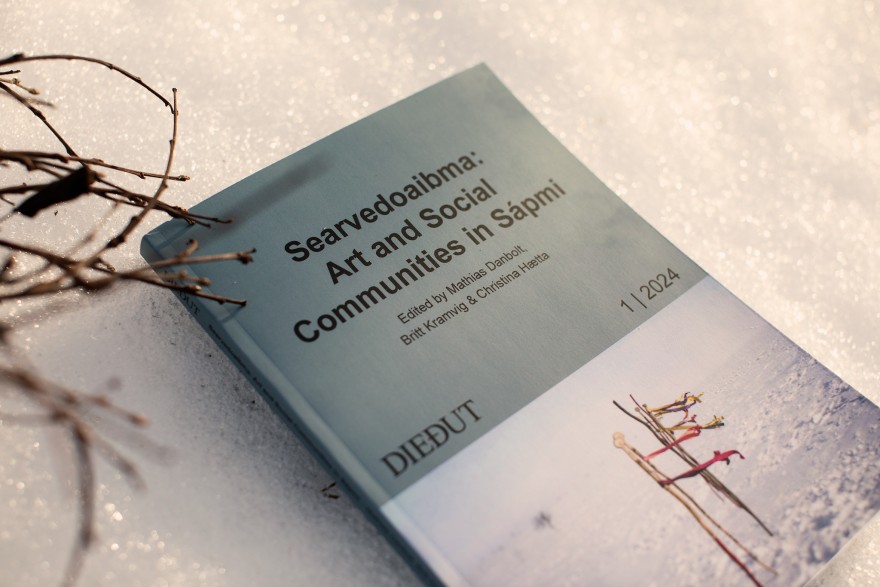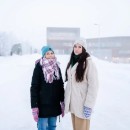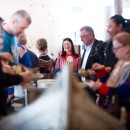Latest news
- Fall 2024 Study Programs
- State budget 2024: Allocation to the Sami university of applied sciences
- Official Opening of the Student House
- Official Opening of a New Academic Year
- Concert in the canteen 16.08!
- Get to know our new principal
- Tuition fees for international students
- School sessions and gatherings autumn 2023
- Become a student at Sámi University of Applied Sciences this fall!

New book on the conditions for Sámi art and duodji in Sápmi and the importance of self-determination
The anthology “Searvedoaibma: Art and Social Communities in Sápmi” takes its starting point in a striking paradox pertaining to the status of Sámi art and culture. Over the last years, Sámi art and duodji have gained new visibility internationally, and numerous Sámi artists and duojárat have presented work in prestigious exhibitions and institutions. But the conditions for working as Sámi artists in Sápmi on Sámi premises have not changed accordingly. There are still few Sámi art institutions, there is still no Sámi art museum, the funding structures in the Nordic nation states are not adapted to the border-crossing Sámi art scene, and the curatorial framing of Sámi art remains all too often marked by a disregard for Sámi language, knowledge systems, and customs.
Mathias Danbolt, Britt Kramvig and Christina Hætta have edited this publication in the Dieđut book series of Sámi University of Applied Sciences. Searvedoaibma: Art and Social Communities in Sápmi includes contributions from primarily Sámi researchers, curators, and artists who reflect upon the conditions for working with Sámi art and duodji in a time marked by truth and reconciliation processes as well as an ongoing activist resistance against the colonial practices and politics of the Nordic nation states. The articles and essays in the book cover a wide variety of topics central to the intersection between art and communities in Sámi today, from the importance of queer Sámi spaces to the potentials of performance and dance to processes of reconciliation. Together, the texts raise questions on the meaning and practice of self-determination in relation to Sámi art and culture – questions that remain intimately connected with questions of selfgovernance of land and water.
Searvedoaibma is published as part of the research project “Okta: Art and Communities in Friction in Sápmi” (2019-2022) supported by Arts Council Norway and Danish Arts Council, with additional financial support from UiT: The Arctic University of Norway, Sámediggi/The Sámi Parliament, Sámi allaskuvla, Sámiráđđi/The Saami Council, and the Nordic Council of Ministers.
CONTRIBUTIONS BY:
ELISABETH STUBBERUD, TUULA SHARMA VASSVIK, GUNVOR GUTTORM, IŊGA ELISA PÅVE IDIVUOMA, SAMUEL VALKEAPÄÄ, ERIKA DE VIVO, CHRISTINA HÆTTA, GRY FORS SPEIN, ASLAK HEIKA HÆTTA BJØRN, JENNI LAITI, PETRA LAITI, NIILLAS HOLMBERG, BRITT KRAMVIG, AND MATHIAS DANBOLT
Contact:
Mathias Danbolt (danbolt@hum.ku.dk) or
Christina Hætta (christina@saamicouncil.net).
To order the book, please contact: orderbook@samas.no


